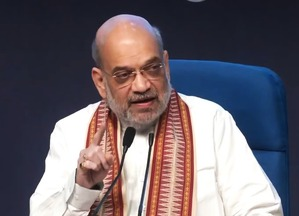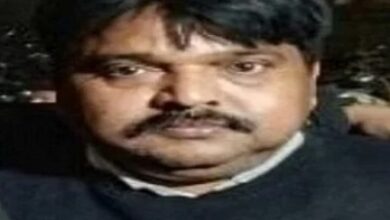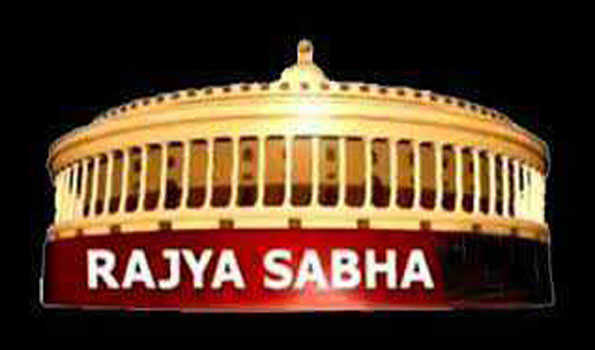
Chandigarh, Aug 16: Just two months after the parliamentary elections, politics in BJP-ruled Haryana heated up on Friday with the Election Commission of India (ECI) announcing the legislative polls in a single phase for 90 Assembly seats on October 1.
The Assembly election results will be declared on October 4.
Political observers say the ruling BJP, which is confident of its return to power with a majority for the third-consecutive term under the leadership of first-time Chief Minister and Other Backward Class (OBC) leader Nayab Singh Saini, has been facing anti-incumbency and farmers’ anger.
The BJP’s main rival, the Congress, which ruled the state for a decade till 2014, has an edge over it with the support of farmers, traders and government employees.
Senior Congress leader and two-time chief minister Bhupinder Hooda is working hard to return to power amid the party’s internal ‘war of supremacy’.
Even the AAP has launched its campaign by targeting the BJP government over the issues of unemployment, law and order and the Agnipath scheme.
Contesting solo on all seats, the party launched the ‘Kejriwal Ki 5 Guarantee’ campaign, promising free electricity, free medical treatment, free education, Rs 1,000 per month to every woman and employment for the youth.
In October 2019, the BJP, which won 40 seats and was six short of a majority in the 90-member Assembly, formed the government in alliance with the then newly-formed Jannayak Janta Party (JJP) led by Dushyant Chautala, who was Khattar’s deputy in the government.
Political observers told IANS that Saini’s elevation to the top post is intended to consolidate the non-Jat and OBC votes.
Also, it is an attempt to counter anti-incumbency against Manohar Lal Khattar, who had been at the helm from 2014 to March 2024.
In the caste politics of Haryana, the Jat support is largely divided among the Congress, JJP and Indian National Lok Dal (INLD).
Significantly, the Jats are a landowning community that accounts for around 25 per cent of the state’s population.
Union Home Minister Amit Shah has announced that the BJP will go solo in the Assembly elections under CM Saini’s leadership.
In Haryana, OBCs account for about 30 per cent votes, followed by Jats 25 per cent and the Scheduled Castes (SCs) about 20 per cent.
In the just-concluded Lok Sabha polls, the Congress has won three Jat-dominated constituencies, (Rohtak by Deepender Hooda, Sonipat by Satpal Brahmchari and Hisar by Jai Prakash), where farmers largely played a crucial role in its victory.
The Congress has also won both the SC-reserved constituencies (Sirsa by Kumari Selja and Ambala by Varun Chaudhary).
The Congress is trying to woo the Jats and Dalits with Hooda as the tallest Jat leader and his loyalist Udai Bhan, the state Congress President, a Dalit.
In the run up to the parliamentary polls in June, three Independent legislators had withdrawn their support from the government, reducing it to a minority.
The three legislators — Sombir Sangwan, Randhir Gollen, and Dharampal Gonder — had extended support to the Congress.
In the memorandum to Governor Bandaru Dattatreya, the Congress, which sought dissolution of the Assembly, said the BJP has 41 legislators in the 90-member house.
Apart from its own 41 legislators, the government has the support of one legislator of the Haryana Lokhit Party and one Independent.
The total number of legislators supporting the government is only 43, said the memorandum.
“At present, the number of legislators in the House is 87 and the majority figure is 44. If the present government does not use horse-trading and other unconstitutional methods, it does not have a majority in the House.
“Therefore, as the protector of the Constitution, the Governor should immediately dismiss the minority government and impose President’s Rule in the state,” the memorandum had said.
In the Opposition, the Congress has 29 legislators, the JJP has 10, and the INLD has one.
Three Independents support the Congress, and another Independent, Balraj Kundu, has been opposing the BJP.
This takes the tally of the Opposition to 44.
In the Lok Sabha polls, while the Congress-led INDIA bloc led in 46 Assembly segments, the BJP candidates were ahead in the remaining 44 seats. From a 58.21 per cent vote share in 2019 parliamentary polls, the vote share of the BJP slipped to 46.10 per cent in 2024 by losing five seats to the Congress.
The BJP’s vote share in the October 2019 Assembly election was 36.49 per cent when the party could not cross the halfway mark in the 90-member Assembly and stitched a post-poll alliance with the JJP.
The Congress registered over 15 per cent rise in its vote share in 2024 in comparison to the 2019 parliamentary election vote share.
The Congress with wins in five seats secured 43.68 per cent vote share, up from 28.51 per cent in 2019.
The AAP, which contested Kurukshetra Lok Sabha seat in alliance with the Congress, lost by a slender margin by securing 3.95 per cent vote share in comparison to 0.87 per cent vote share of JJP and 1.74 per cent of the INLD.
In the state, the legacy of former Deputy Prime Minister and the state’s tallest Jat leader, Chaudhary Devi Lal who, with his family ruled the state’s dusty and defection-ridden politics for decades, is shrinking owing to the family feud.
The term of the state Assembly in Haryana is due to expire on November 3 with 90 Assembly Constituencies — 73 general and 17 reserved for SCs.
According to the ECI, 2.01 crore electors are registered in the state with approximately 1.06 crore men and 95 lakh women voters.
Over 4.52 lakh first-time voters (18-19 years), 2.55 lakh 85 plus senior citizens and 1.5 lakh Persons with Disabilities voters are registered in the state.
Over 10,000 voters are more than 100-years-old.
(Vishal Gulati can be contacted at gulatiians@gmail.com)
–IANS






